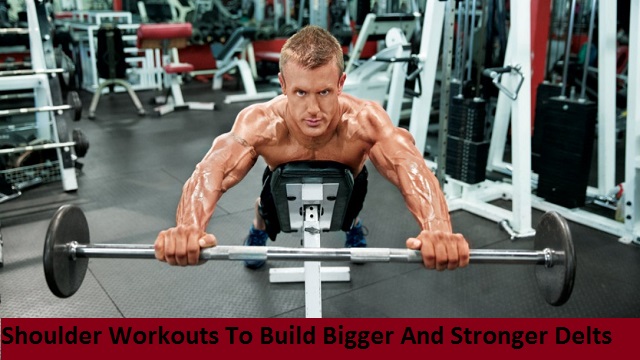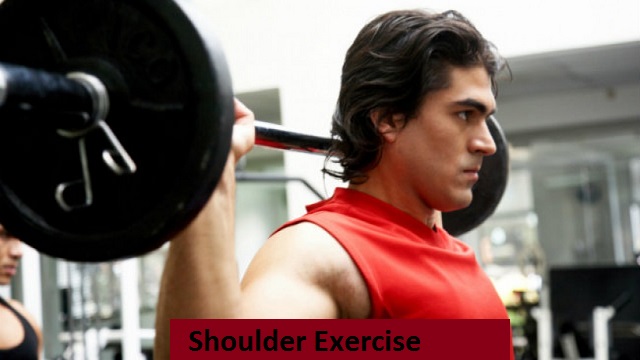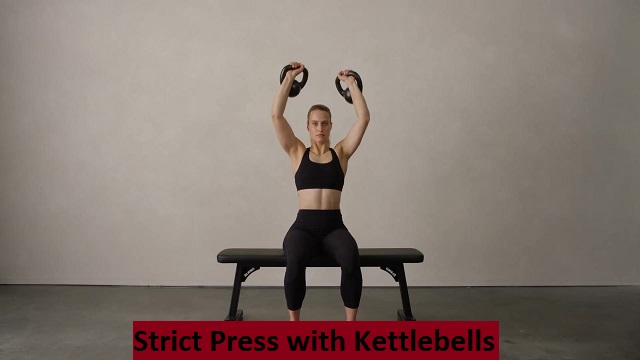
Fit Shoulder Workouts To Build Bigger And Stronger Delts:
The time has come to grow greatly. Nothing will give you more confidence than a strong, clean, and crisp shoulder cut as summer approaches. However, getting those massive Deltoid Muscles can be difficult. I’ll go over a few of the best shoulder exercises so you can quickly develop bigger, stronger shoulders.
How Do Deltoid Muscles Work?
Your shoulders are made up of three main muscle groups called the anterior, lateral, and posterior deltoid, which give your shoulders their rounded triangular shape. Three additional skeletal components—the humerus, the upper arm bone, and the scapula—are connected to your shoulders via tendons: the clavicle, the collarbone, and the shoulder blade.
Exercises for the chest and back activate the deltoids as a secondary muscle group; for this reason, it’s important to include deltoid-specific exercises in your training regimen.
Anatomy of Deltoid Muscle.
You need a fundamental understanding of the anatomy and the Deltoid muscles that are being stimulated in order to isolate and target those muscles during training and fully comprehend how to build your shoulders.
(Front) Anterior.
At the front of the shoulder are your anterior Deltoid Muscles. Also known as front Deltoid Muscles, this muscle group is typically worked by pushing weight overhead or in front of the body.
Medial (Lateral).
The medial deltoids, also referred to as the lateral Deltoid Muscles, are situated in the middle of the shoulder.
The medial Deltoid Muscles, the largest of the three Deltoid Muscles heads, can be activated with a variety of different shoulder workouts and exercises, but side or lateral raises are the most effective way to focus on them.
Front (back).
At the back of the shoulder are the posterior or rear Deltoid Muscles. Gravity works against the posterior muscles during any movement that forces weight behind you, such as a cable crossover or exercises performed while bending over. This causes the rear Deltoid muscles to grow bigger and more defined.

Best Shoulder Exercise.
This shoulder workout combines isolated strength movements with functional strength exercises. A greater variety of exercises, performed at various intensities and temperatures, will aid in maximizing muscle growth and gains if you’re trying to develop larger shoulders or have a shoulder day specifically dedicated to this goal. Aim for at least 3–4 sets of 10–12 reps for these exercises. When performing bilateral exercises like the shoulder press, alternate set and rep schemes, single-arm movements, and pause reps can all be used.
Swing a kettlebell
Any routine for the shoulders must include the kettlebell swing. Kettlebells produce total-body tension, which is essential for building a strong core and the basis of all kettlebell movements. .
- Start by standing with your feet shoulder-width apart and pointing your toes in the direction of numbers 11 and 1 (as on a clock).
- Put the kettlebell in front of your toes on the ground. Hinge at the hips and press the booty against the wall behind you, similar to the deadlift, with your shoulders tucked back and lats pulled down.
- Grab the kettlebell with two hands on the handle by extending your arm outward (not forward).
- Since your knees should be directly over your ankles in this position, your quadriceps and hamstrings will be under a lot of tension as you prepare to exert force.
- Inhale deeply through your nose, tighten your abs, and hike the kettlebell back between your legs with your lats until your forearms are in contact with your inner thighs.
- After reaching full extension, open your hips at the top of the swing by snapping them together, standing up, and maintaining tension throughout your entire body. This will generate force and power through your hips rather than your arms or upper body.
- Before falling back down due to gravity, the kettlebell should be raised to chest or shoulder height.
Engage your lats to hasten the descent of the bell as gravity pulls it back down.
Kettle Bell Swing with One Arm.
Similar to the double-handed kettlebell swing, but a little more difficult. You will be able to develop a stronger stance, body awareness, and core engagement as a result of increased tension and isolation, which will ultimately help you develop bigger and stronger shoulders.
- Step out with your feet shoulder-width apart.
- In front of your toes, set down the kettlebell.
- Put your glutes against the wall behind you while hingeing at the hips with your shoulders tucked back and lats pulled down.
- Grab the kettlebell with one hand on the handle and the other out parallel to the floor for stability and balance by reaching out (not forward).
- Brace your core and hike (like a football) the kettlebell back between your legs with your lats until your forearms are in contact with your inner thighs.
- Instead of using your arms or upper body to propel yourself forward after reaching full extension, open your hips at the top of the swing by snapping them together, standing up, and maintaining tension throughout your entire body.
- Before falling back down due to gravity, the kettlebell should be raised to chest or shoulder height.
- Engage your lats to hasten the descent of the bell as gravity pulls it back down.

Strict Press with Kettlebells.
When concentrating on aesthetic objectives,Deltoid muscle isolation is essential. One of the best exercises for shoulders to isolate completely is the kettlebell press. The kettlebell press will enhance your range of motion, mobility, core strength, and posture in addition to isolation.
- Standing with the kettlebell in the rack position just below the chin and maintaining full body tension.
- Press the kettlebell overhead while tightening your core, engaging your shoulder, and standing tall.
- The elbow remains up and forward when pressing.
- Maintaining the elbow in the forward position will help you develop the strength and Deltoid muscle memory necessary for many other exercises you’ll be doing during your training, such as push presses.
- As you finish the movement, make sure your palm is facing forward, your knuckles are pointed upward, and your hand is relaxed.
- Bend the elbow and track the weight into the rack position with the fist under the chin, lats engaged with the armpit, and the bell resting between the forearm and bicep in the “nest” to lower the KB back down.
- You should not rely entirely on the momentum from the legs for a shoulder press; instead, you should maintain tension throughout the body.Side raise with dumbbells.
Every shoulder routine needs to include the lateral raise, which is a fundamental exercise. The two most important aspects of this movement, which has numerous variations, are tempo and form. With each rep, isolate your delts by going slowly and steadily. Make sure the weight you use challenges you without compromising your form.
- Standing with your arms at your sides and your palms facing inward, hold a dumbbell in each hand.
- Make sure your abs are tight and there is a slight bend in your knees. Maintain neutral shoulders (don’t shrug).
- Raise the dumbbells out to the sides, but no higher than shoulder height, while maintaining this stance.
- Take a moment to assess your posture: is your back still neutral? Are your elbows slightly bent?
- Bring the dumbbells back to the starting position gradually. Repetition of 3 sets of 8–12 reps is required.
Front raise with dumbbells.
The anterior Deltoid Muscles and even the upper chest will be worked during a front raise, just like they are during a lateral raise. You can develop strength and definition in the front of your shoulders by performing the front-raise exercise, another isolation exercise.
- Maintain a straight back and flat-footed stance. Weight-bearing arms should be hanging down.
With the palms facing back toward the thighs, hold the dumbbells across the thighs horizontally. - Be sure to hold onto the item firmly.
- Exercise abdominal Deltoid muscle bracing.
- With your arms extended in front of you and your palms facing down, lift the weights up while inhaling. To lessen the strain on the joints, maintain a slight bend in the elbows. In order to feel the shoulder Deltoid Muscles contract, pause when the arms are roughly parallel to the floor.
- Exhale as you slowly and steadily move the dumbbells back to their starting position at the thighs.
- As many sets and repetitions as are specified in your program, repeat the exercise.

Scarecrows.
The scarecrow exercise, which is uncommon in most shoulder routines, is a fantastic shoulder workout that increases range of motion, strengthens the Deltoid Muscles, and develops the rotator cuff. In spite of the fact that in your initial starting position you’ll resemble a limp scarecrow, each repetition will strengthen your rotator cuff and improve the way your shoulders are positioned.
- Place your feet shoulder-width apart while holding a light plate (5–10 lbs) in each hand.
- Brace your abs and bend your knees and hips while maintaining an arched lower back until your torso is almost parallel to the ground.
- Allow your arms to hang down straight. Once your upper arms are parallel to your body and your elbows are bent 90 degrees, row the weights to the sides of your torso.
- Now turn your forearms until the weights are above your head.
- Press the weights straight out in front of you after that.
- Go back to the beginning position gradually. A rep is one. Perform three sets of 10–12 repetitions, with a 60–second break between each set. With only 5 lbs in each hand, your arms will be burning.
Shoulder press with a dumbbell.
Your core stability will improve as a result of the dumbbell shoulder press, and you’ll develop huge shoulders. The exercise strengthens your entire delt region and corrects shoulder imbalances.
- Maintain a straight back while standing tall.
- An overhand grip is used to hold a dumbbell at the shoulders in each hand. The correct position for your thumbs and knuckles is inside and up.
- While exhaling, slowly raise the weights above your head. Pause when the motion is at its strongest.
- As you inhale, bring the dumbbells back to your shoulders.
- As many times as necessary, between eight and twelve, repeat.
Press, Arnold.
The Arnold press, made famous by its creator Arnold Schwarzenegger, also known as “The Governator,” works the front, lateral, and rear delts simultaneously, which makes it very efficient for developing bigger, stronger shoulders.
- Dumbbells should be held at the beginning with palms facing in and elbow in front.
- Twist your elbows and palms outward as you press the dumbbells up.
- You don’t have to lock out your elbows overhead in the top position if you want to keep the attention on your shoulders.
- Even if choosing lighter weight is necessary, concentrate on controlled movement throughout the entire movement — ascending and descending.
Raise the front plate.
An excellent shoulder exercise is the front plate raise. As you raise the plate, your upper chest, traps, and core are worked along with your shoulders. The front plate raise will assist in increasing your overall strength in contrast to a conventional isolated shoulder movement.
- Stand with your feet shoulder-width apart. Maintain a straight back and flat feet at all times. You should hang down your weight-bearing arms.
- Horizontally hold the plate across the thighs. Make sure you have a firm grip on each side.
- Brace your abdominal muscles.
- Raise your arms out in front of you as you exhale.To lessen the strain on the joints, maintain a slight bend in the elbows. Feel the shoulders contracting as you pause when the arms are nearly parallel to the floor.
- Exhaling, slowly and steadily move the plate back to the thighs, where it was initially positioned.
For as many sets and repetitions as your program calls for, repeat the exercise.
Standing Y lift.
The Standing “Y” Raise is a fantastic variation to keep your shoulder workout interesting and enjoyable. It is one of the most underrated shoulder exercises.
- With your palms facing your hips, hold a dumbbell in each hand while standing with your feet shoulder-width apart.
- With your palms facing each other and the dumbbells raised above your head, form a Y with your body.
- Repeat by lowering the dumbbells to their starting position. Squeeze your shoulder blades together while facing forward and opening your chest. Raising the dumbbells above your head while maintaining straight arms and exhaling.
- Keep your body still, don’t arch your back, and only move your shoulders to move the dumbbells. As you slowly revert to the starting position, take a breath.
Also Read: Reversing Diet
Leave a Reply